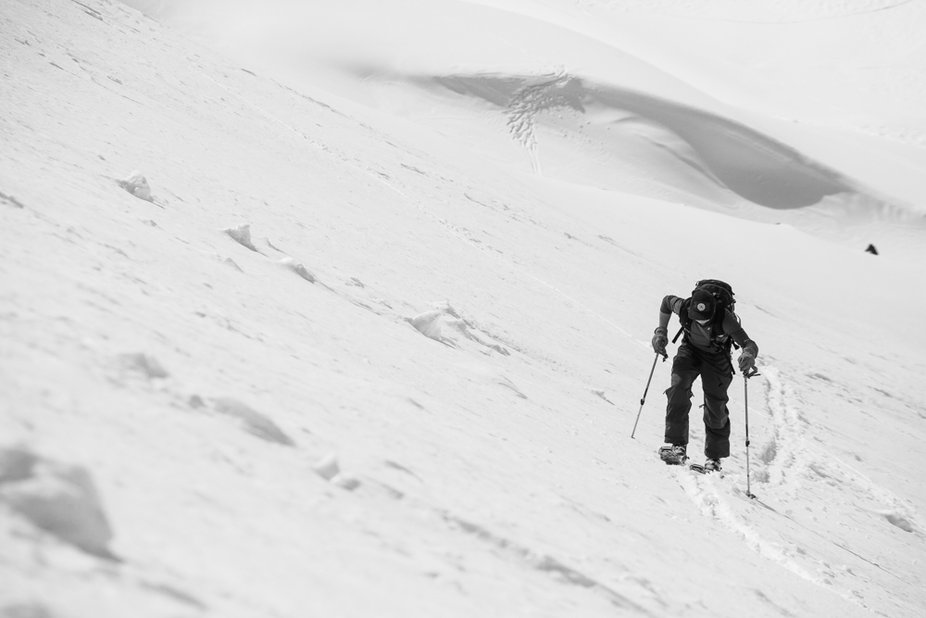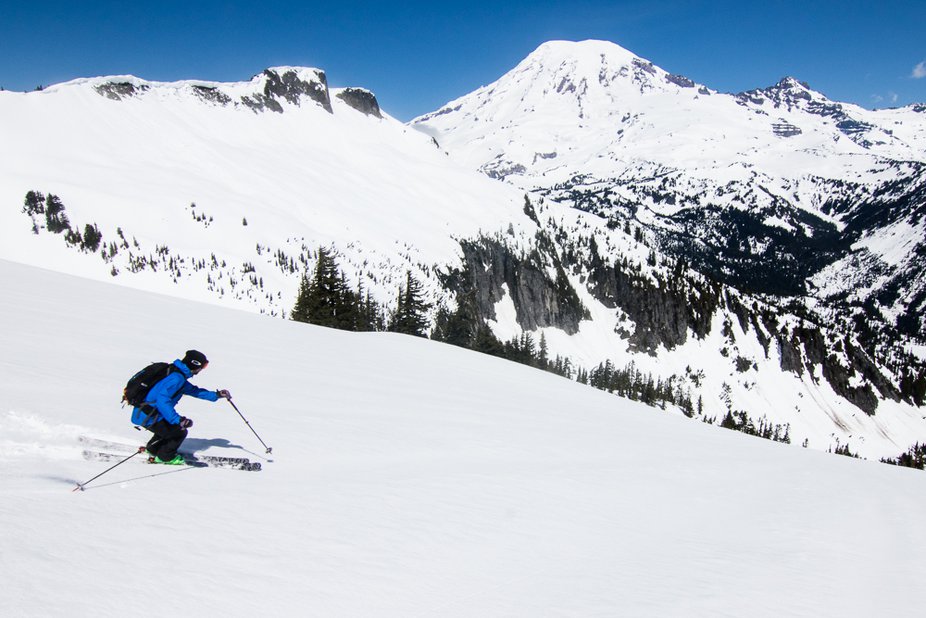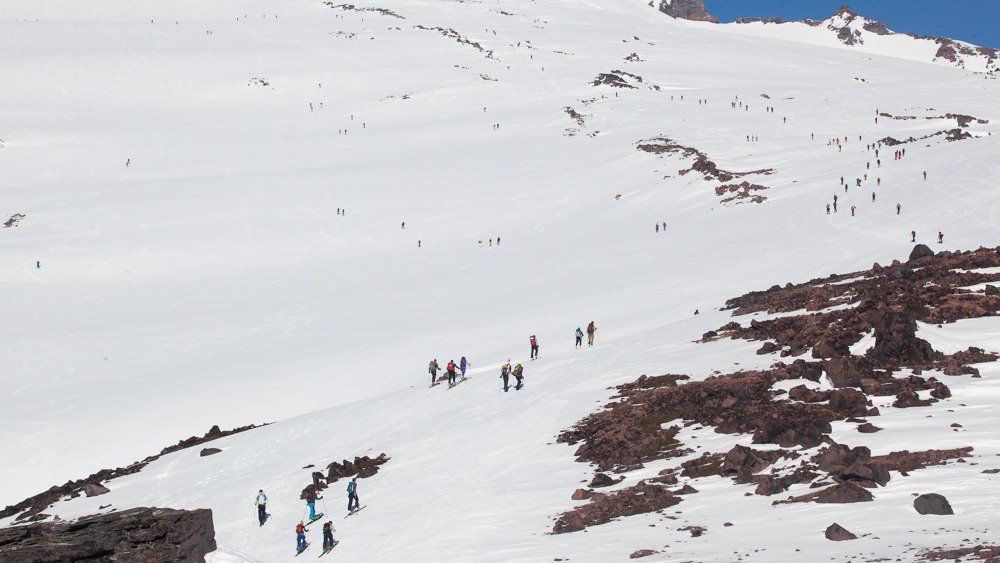Skiing has always served as an escape from reality, everyday life, normalcy, the mundane, the “real world,” and any other way you want to describe the routine. This winter skiing will fill this role perhaps more than ever. With outdoor patios closed, and parks unripe for socially distanced picnics, the mountains will be a prime target for folks looking to blow off some steam. With reservations and other restrictions at resorts, more folks than ever are sure to be heading into the backcountry. What is already a tenuous atmosphere, and a dangerous one, will be stress tested as users must learn to operate safely in a more densely crowded environment. While no one is sure exactly how this winter will look, we know the backcountry is likely to be more popular than ever. To get some perspectives on what to expect, we reached out to experts in the field, from educators to forecasters.
If you visited a trailhead at any point this summer you were sure to run into a crowd, no matter how deep into the wilderness you ventured. The simple fact is that the pandemic has brought more people outside than ever before. No one expects winter to buck this trend. Skiing has already had a glimpse of this crowding last spring, as resorts closed and folks headed to the backcountry.

So there are going to be more people backcountry skiing. What does that mean for safety? I asked the big question first: Will this backcountry boom mean more avalanche accidents? Mark Staples, Director of the Forest Service Utah Avalanche Center said it’s simple math, “when we put more people in the backcountry, chances of accidents go up.” While the chances for avalanches go up, this doesn’t necessarily mean more accidents Staples’ UAC colleague Andy Nassetta explained. “It’s not like for every 100 people more that go into the backcountry every year it's another fatality… Over the past decade backcountry usage has gone up and… fatalities have remained [relatively consistent].” Factors like snowpack will have a huge influence on the year’s numbers - pair a year of instability with more users, and the numbers could be scary. On the other hand, if snowpacks remain relatively stable, the increased traffic may not lead to an increase in fatalities.

There has traditionally been a high barrier to entry for backcountry skiing, with specialized gear and closely held knowledge, however, both of these hurdles have continued to be easier to clear. Backcountry gear is easier to use than ever, and the proliferation of “crossover” gear has allowed skiers to dip their toes into touring without committing to a specialized setup. Retailers have already seen a huge uptick in backcountry gear sales. evo Merchandise Manager Lauren Anderson told us that the retailer has seen peak demand all spring and summer, “Backcountry and touring sales turned on in March when ski areas were forced to shut down and interest never fully waned. Sales for evo typically ramp up in January and February when conditions are ripe for backcountry adventures, but we are already seeing early demand for backcountry equipment outpace in our biggest winter months.“ Judging from the way other industries were able or unable to react in the surge for demand of outdoor gear over the summer, there could possibly be shortages of touring and safety equipment.
Gear is obviously only one piece of the puzzle, with knowledge and education making up a perhaps even more important piece of backcountry safety, each of these areas faces its own unique challenges. The folks I talked to from various avalanche centers all communicated a consistent message, paraphrased, “we’re communicating the basics, and trying to reach as many users (new and old) as possible.” Those basics are the trifecta of safety gear, education, and information. In other words, in a time with more users and less experienced users means returning to the basics.

For avalanche centers, this simplified strategy relies on including as many stakeholders as possible - leaning on educators, retailers, and the media communicate the risk of backcountry travel and avalanches. Colorado Avalanche Information Center Director Ethan Greene summed this strategy up to me, saying, “part of what we’re doing is the same thing we always do - getting ready to put out high quality avalanche forecast every day… whether one person accesses those, or 10 million do, that process really doesn’t change that much. The part that’s changing is how we reach people. We want to do more to get people to know that these resources are there, and do more to encourage people to use them.”
So information is being more widely and simply shared, but what about the education that’s necessary to interpret that data and use it to make decisions in the field? This has always been a sticking point in backcountry skiing, with an avy class being all but a necessity for backcountry travel, but the surge of users and the effects of the pandemic education is a bit tricky this year. Rec Programs Director for AIARE, Liz Riggs Meder said that” high demand for education is not a new trend - with demand outpacing supply nearly every year.” So, what happens when a spike happens on an already high trend? There will be unmet demand for avalanche education.

This means that prospective backcountry users might be missing one of the essential pieces of the preparedness triangle of education, gear, and information. As mentioned earlier, avalanche fatalities in the US have remained rather consistent over the recent years, even with user growth, so we’re not spelling doom with hordes of uneducated skiers. It does bring into question what happens when folks are unable to access all of the resources they need to more safely access the backcountry. Do they go anyways? Or do they go home?
This is where the pandemic and the backcountry meet - uncertainty. Riggs Meder drew the comparison, “We talk about avalanches as a low-likelihood, high-consequence event… Covid is exactly the same thing. We don’t know if and when we’ve been exposed, we may catch it and not know it, we may even die. We talk about it in the guiding world, whenever the uncertainty goes up, you need to be more conservative, and that’s hard message to get across, especially when people have been practicing austerity for six or seven months now.”
So yes, we must reach as many users, new and old, with as much information as possible, but to really understand what this winter will look like in the backcountry, we need to look back to one of the underlying risk factors - uncertainty, and how we deal with it. Like Covid, the measures users take to recreate safely are not just for themselves. Being properly prepared and taking precautions means keeping other backcountry users out of dangerous scenarios. While months of austerity and restrictions may call for the freedom and release of backcountry skiing, it’s imperative to keep this community view in mind. With more folks in the backcountry, everyone needs to be on higher alert. Ultimately, this means making some tough, sometimes unsatisfying, decisions like turning around at the trailhead.



Comments